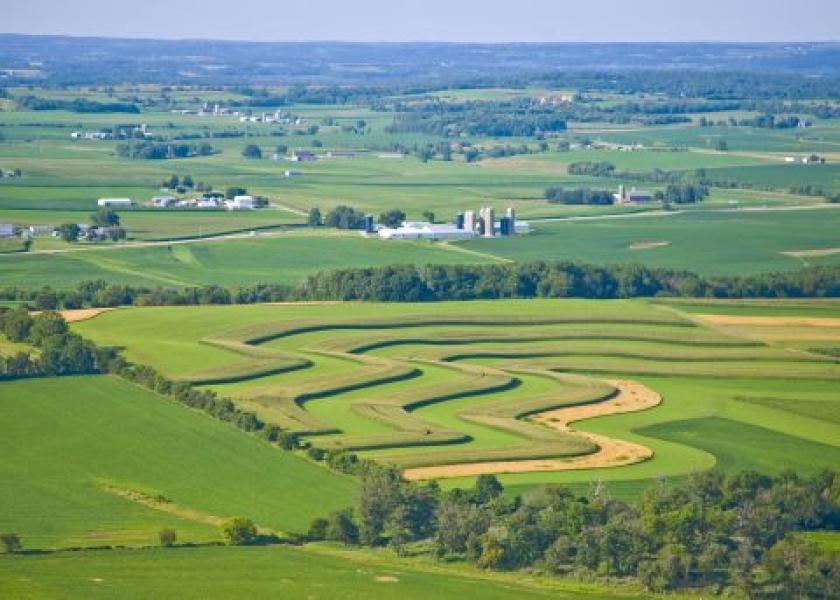The Truth Behind Wisconsin Losing 455 Dairy Farms

Ask any dairy farmer how they feel about today’s markets and they will say that the economics don’t add up. Simply put, $15 milk is not cutting it. This is true in any state, but certainly being highlighted in Wisconsin. The state's Department of Agriculture, Trade, and Consumer Protection (DATCP) reported that last year America’s Dairyland experienced a decline of 455 dairy farms.
To put that in perspective, in 2005, Wisconsin had 15,100 licensed herds, with an average herd size of 82 cows. A decade later it had 9,900 herds, with an average herd size of 129 cows. In 2022, the state had 6,350 dairy farms with an average herd size of 200 cows. The total number of cows in Wisconsin has held steady over the past decade at around 1.2 million cows.
Chad Vincent, CEO of Dairy Farmers of Wisconsin shared that they work closely with the Department of Agriculture, and in March of 2020, they sent out a farm survey asking how long dairy producers are planning to stay in business and if they have a succession plan in place.
“At that point in time, 17% of all dairy farms in the state said that within five years they would not be milking,” Vincent said, adding that none of the numbers he sees on a monthly basis is a surprise.
The 2020 survey also indicated that 22% of all the dairies under 100 head had plans to exit in the next 5 years.
“A lot of that is going to be heavily dependent on the milk price,” he says. “Costs, financials, economics and all that kind of stuff.”
In the last three months, the Department of Ag in Wisconsin has reported 94 dairies exited in October, 94 in November and 87 in December.
“Those are pretty consistent numbers with what the survey showed,” he says, reporting the majority of those numbers are more slanted toward smaller dairies. “That it is because there's a lot more farms that are under 200 cows than there are over 200 cows in our state.”
At the start of the New Year, Wisconsin had 5,895 dairies. Vincent said that he has been talking with Secretary Romanski and the Department of Ag about fielding the next survey to get more up-to-date information from dairy decision makers.
“I don't see it slowing down in the next three to five years,” he says, sharing that 65% of the primary decision makers on the farm were over 50-years-old and 15% were over 65.
“The biggest issue that we're facing is that the farmers are retiring,” Vincent says, sharing that 40% of decision-makers from the 2020 survey had identified a successor. “And for those farms with under 100 cows, only 30% in 2020 had identified a successor.”
According to Vincent, the last five times the dairy industry has seen record high prices, the following year illustrated extremely low or record-low prices.
“You hit the highs and producers can pay off the bills and they’re able to put their nose above water for a while,” he says.
Despite the hard facts of America's Dairyland losing farms, Vincent says Wisconsin has an amazing infrastructure and fantastic dairies ranging from 25 cows to thousands of cows.
“I think Wisconsin dairy is as strong today as it's ever been, although it is sad to see the next generation not come back,” he says. “Dairy farming is hard work. Labor is hard to find. It's hard to find talented people that will stay and do the hard work, day in and day out, 365 days a year.”
Vincent shares that more times than not when dairy farmers retire, they sell the cows and often the cows stay in the state.
“The good news is we have great infrastructure in Wisconsin and milk continues to be produced. The plants continue to process World Class cheese. Our cheese production and sales continue to increase. We're in a really healthy position as an industry,” he says. “It's sad to see the farms don't have the next generation or the ability to weather the storm to continue as I believe that diversity of farms that we have in this state is magical and it's one of the really wonderful things that makes Wisconsin America's Dairyland.”
To learn more about Dairy Farmers of Wisconsin visit: www.wisconsindairy.org.







